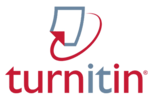Differential Effectiveness of Differentiated Learning Strategies in the Merdeka Curriculum: A Comparative Study with the 2013 Curriculum
no thanks
Abstract
Purpose of the study: This study examines the effect of differentiated learning strategies implemented in the Merdeka Curriculum compared to the 2013 Curriculum on student learning outcomes.
Methodology: Using a quantitative comparative design, data were collected from report card scores of 36 students (20 from the Merdeka Curriculum and 16 from the 2013 Curriculum) and analyzed using an independent sample t-test.
Main Findings: Findings reveal a significant improvement in learning outcomes for students under the Merdeka Curriculum (M=79.95) compared to the 2013 Curriculum (M=77.40), with a mean difference of 2.55 (p < 0.05).
Novelty/Originality of this study: This research highlights the effectiveness of differentiation in Indonesian curriculum reform and provides evidence for policymakers to adopt student-centered strategies to enhance learning outcomes.
References
M. of E. and C. of the R. of Indonesia, The 2013 Curriculum for Senior High Schools/Madrasah Aliyah. Indonesia, 2014.
M. of E. and Culture, “PISA Indonesia 2018 Results: Widening Access, Time to Improve Quality.” Accessed: Feb. 12, 2023. [Online]. Available: https://www.kemdikbud.go.id/main/blog/2019/12/
R. Sartini, & Mulyono, “Analisis implementasi kurikulum merdeka belajar untuk mempersiapkan pembelajaran abad 21 [Analysis of the implementation of the independent learning curriculum to prepare for 21st century learning],” Didakt. J. Ilm. PGSD STKIP Subang, vol. 8, no. 2, pp. 1348–1363, 2022, doi: 10.36989/didaktik.v8i2.392.
D. Eggen, P., & Kauchak, Educational Psychology: Windows on Classrooms (10th edition). Essex, UK: Pearson Education Limited, 2016.
A. Hall, T., Strangman, N., & Meyer, “Differentiated instruction and implications for UDL implementation,” 2020.
I. Pasira, “Assessing the Effectiveness of Differentiated Instruction Strategies in Diverse Classrooms,” J. Educ. Rev. Provis., 2022, doi: 10.55885/jerp.v2i1.151.
S. Kamenetzky, A., & Hinrichs-Krapels, “How do organisations implement research impact assessment (RIA) principles and good practice? A narrative review and exploratory study of four international research funding and administrative organisations,” Heal. Res. Policy Syst., vol. 18, no. 1, pp. 1–19, 2020.
H. Hattie, J., & Timperley, “The Power of Feedback,” Rev. Educ. Res., vol. 77, no. 1, pp. 81–112, 2007.
B. Burhan, Quantitative Research Methodology. Jakarta: Kencana Prenada Media Group, 2016.
A. Diato, “Manual Merdeka Curriculum Sample t-test.” Accessed: Feb. 16, 2023. [Online]. Available: https://aksiomatik.wordpress.com/2016/09/08/uji-independent-sample-t-test-manually/
S. Santoso, Mastering SPSS Version 19. Jakarta: PT. Elex Media Komputindo, 2011.
M. Amhag, L., Hellström, L., & Stigmar, “Teacher educators’ use of digital tools and needs for digital competence in higher education,” J. Digit. Learn. Teach. Educ., vol. 35, no. 4, pp. 203–220, 2019.
C. Pozas, M., Letzel, V., & Schneider, “Teachers and differentiated instruction: exploring differentiation practices to address student diversity.,” J. Res. Spec. Educ. Needs, vol. 20, no. 3, pp. 217–230, 2020.
S. E. Eikeland, I., & Ohna, “Differentiation in education: a configurative review,” Nord. J. Stud. Educ. Policy, vol. 8, no. 3, pp. 157–170, 2022.
Y. Grecu, “Overcoming obstacles to differentiate instruction when implementing prepared curricular resources in a diverse classroom,” Anatol. J. Educ., 2022, doi: 10.29333/aje.2022.7113a.
J. Gaitas, S., Carêto, C., Peixoto, F., & Castro Silva, “Differentiated instruction: ‘to be, or not to be, that is the question,’” Int. J. Incl. Educ., vol. 28, pp. 2607–2623, 2022.
M. Mahdum, M., Hadriana, H., & Safriyanti, “Exploring teacher perceptions and motivations to ict use in learning activities in Indonesia,” J. Inf. Technol. Educ., vol. 18, 2019.
S. Juanda, R., Pratama, A., Ningsih, W., Baiti, N., Raudhah, S., Afriani, N., & Barliana, “Teachers’ difficulties in implementing the 2013 curriculum,” J. Syst. Integr., vol. 1, pp. 98–114, 2020, doi: 10.32520/jsi.v1i2.1058.
A. C. Retnawati, H., Hadi, S., & Nugraha, “Vocational High School Teachers’ Difficulties in Implementing the Assessment in Curriculum 2013 in Yogyakarta Province of Indonesia,” Int. J. Instr., vol. 9, no. 1, pp. 33–48, 2016.
S. Azzahra, F., Permana, H., Fitriani, L., Putri, R. M., & Wulandari, “Approaches and models development of 2013 curriculum and merdeka curriculum,” Curricula J. Curric. Dev., vol. 1, no. 2, pp. 189–204, 2022.
S. Rahmah, L., Purwanta, E., Wijayanti, W., & Suhardiman, “Navigating the curriculum landscape: The impact of curriculum 2013 and merdeka curriculum on teachers’ and students’ learning outcomes in Indonesia,” J. Ecohumanism, vol. 3, no. 6, pp. 917–930, 2024.
N. M. Rahim, R. A., Noor, N. M., & Zaid, “Meta-analysis on element of cognitive conflict strategies with a focus on multimedia learning material development.,” Int. Educ. Stud., vol. 3, no. 8, pp. 73–78, 2015.
C. Lubis, “Elemen-elemen Perubahan dalam Kurikulum 2013,” ALSYS, 2022, doi: 10.58578/alsys.v2i2.256.
S. Hanipah, “Analisis kurikulum merdeka belajar dalam memfasilitasi pembelajaran abad ke-21 pada siswa menengah atas [Analysis of the independent learning curriculum in facilitating 21st century learning for high school students],” J. Bintang Pendidik. Indones., 2023, doi: 10.55606/jubpi.v1i2.1860.
D. P. Eggen, P. D., & Kauchak, Educational psychology: Windows on classrooms. 2016.
C. Pozas, M., Letzel, V., & Schneider, “Teachers and differentiated instruction: exploring differentiation practices to address student diversity,” J. Res. Spec. Educ. Needs.
M. Putri, A., & Muldash, “Exploring differentiated learning: A teaching at the right level approach in elementary school,” J. Lesson Learn. Stud., 2024, doi: 10.23887/jlls.v7i2.77274.
C. A. Tomlinson, How to Differentiate Instruction in a Mixed Ability Classroom. 2nd Ed. Virginia USA: ASCD, 2001
Copyright (c) 2025 Mochamad Muchson, Zainal Afandi, Sugiono Sugiono

This work is licensed under a Creative Commons Attribution 4.0 International License.
Authors who publish with this journal agree to the following terms:
- Authors retain copyright and acknowledge that the Integrated Science Education Journal is the first publisher licensed under a Creative Commons Attribution 4.0 International License.
- Authors are able to enter into separate, additional contractual arrangements for the non-exclusive distribution of the journal's published version of the work (e.g., post it to an institutional repository or publish it in a book), with an acknowledgment of its initial publication in this journal.
- Authors are permitted and encouraged to post their work online (e.g., in institutional repositories or on their website) prior to and during the submission process, as it can lead to productive exchanges and earlier and greater citation of published work.








.png)
.png)





